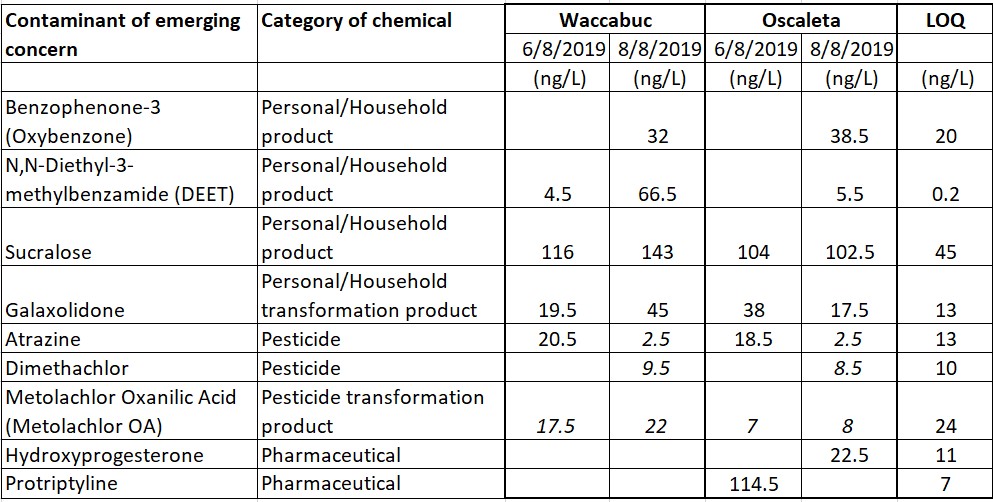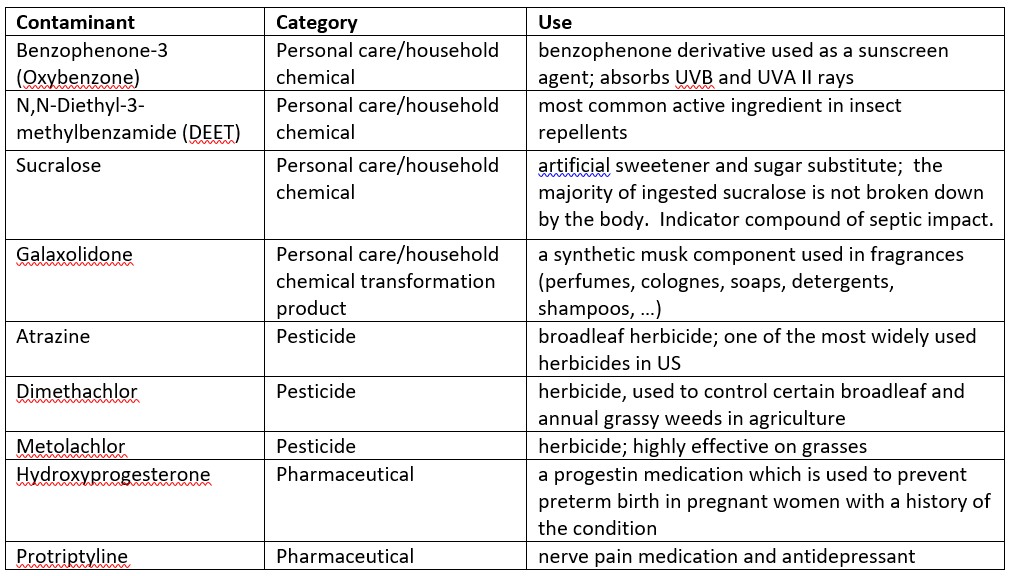Research into human made chemicals
Human activity results in the release of many chemicals into the environment. Recently, scientists have increased their focus on a new, less studied group of organic chemicals that result from human activities, often present in trace amounts. These are contaminants of emerging concern, or CEC’s for short.
CECs are categorized as pharmaceuticals, pesticides, and personal care / household chemicals, as well as the byproducts of those chemicals. Caffeine and acetaminophen are examples of pharmaceuticals; lawn herbicides are pesticides, and sucralose, the sweetener, is an example of a personal care / household chemical. These pollutants can enter our waterbodies through septic system discharges or polluted storm runoff. Since they are present in such low quantities, the human health impacts of CECs are considered minimal today. However, these contaminants can have significant adverse and long-term impacts on aquatic organisms that live in the water. This in turn can have an adverse effect on the overall aquatic ecosystem health and water quality. Scientists also are concerned about the potential effect of the accumulation of these chemicals in the food web and the environment.
2019 study of New York lakes
In 2019, Three Lakes Council participated in a study of 111 lakes selected from more than 7000 New York State lakes. A National Science Foundation Grant funded this study, performed by Syracuse University and Upstate Freshwater Institute. The study was the first attempt to quantify the distribution and type of CEC’s across New York. The study scanned for over 300 chemicals and found 62 in NY waters. Every lake sampled had at least one CEC in each sampling session. We were fortunate to be able to sample two of our lakes as part of this study, and we collected samples from those lakes twice during the spring and summer of 2019.
These chemicals are difficult to study because they are present in such minuscule amounts. The results are reported in nanograms per liter (ng/L), or parts per trillion. We commonly test our water quality, but most of our tests are measured in parts per million or parts per billion. Parts per trillion is tiny. Here’s one way of thinking of the magnitude of these numbers: a million seconds is about 11 days; a billion seconds is almost 32 years. A trillion seconds is 31,710 years.
Results of the study
The table shows the CECs that were in lakes Waccabuc and Oscaleta. LOQ indicates the limit of quantification. Findings below the LOQ are shown in italics: they are estimates and the values are not at an acceptable precision, but they indicate that some trace of the chemical was found. We have received no indication that we should be concerned about these results. However, the presence of one of the two chemicals that are indicators of septic impact reminds us of the continued need to inspect and maintain our septic systems.
The results of testing for our lakes is below. The first table contains the results of the tests. The second table describes the chemicals and their uses.


This summary was prepared from the original reports on Waccabuc and Oscaleta.